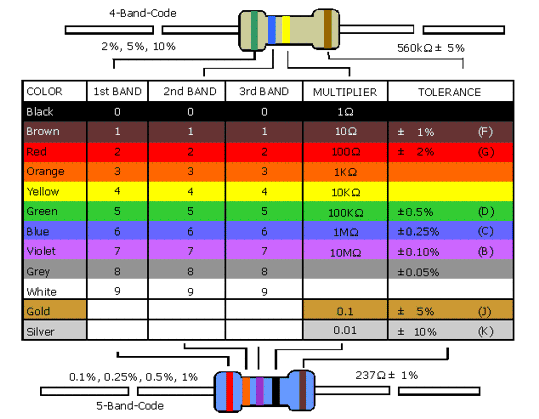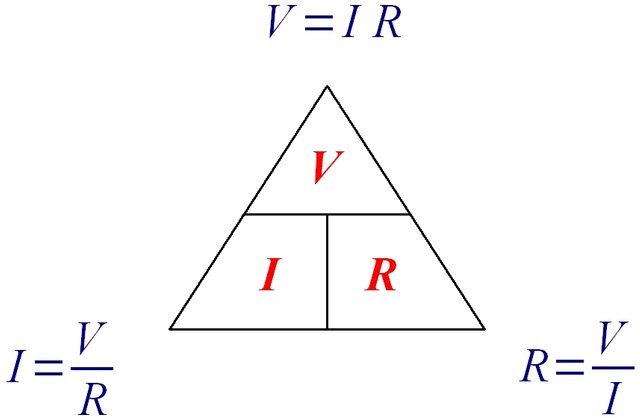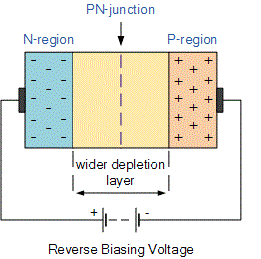Current, Resistance and Transistors. An Introduction to Electricity and Its Wizardly Powers.
Introduction
Electricity is an awesome power. It pervades almost every system that we use in our day to day lives, yet it remains one of the most elusive and least understood mechanisms within the general population. My aim is to demystify some of the properties of electricity and perhaps leave you with a lasting impression of the topic, and engineering in general. This will take time and a concentrated effort on your part and mine. I look forward to embarking on this journey with you.
~~~~~~~~~~~~~~~~~~~~~~~~~~~~~~~~~~~~~~~~~~~~~~~~~~~~~~~~~~~~~~~~~~~~~~~~~~~~~~~~~~~~~~~~~~~~~~
Steemit as an Educational Platform
I believe Steemit will prove an excellent source for education, for teachers and students alike. As the site expands its functionality I hope to see it introduce a feature where series of blogs are easily accessible. For now I will have a table of content for connected posts.
Please comment on any criticism you may have, whatever the issue may be. I'm looking to continually improve with these posts. Thank you.
~~~~~~~~~~~~~~~~~~~~~~~~~~~~~~~~~~~~~~~~~~~~~~~~~~~~~~~~~~~~~~~~~~~~~~~~~~~~~~~~~~~~~~~~~~~~~~
Current, Resistance and Transistors. An Introduction to Electricity and Its Wizardly Powers.
Tonight we'll be looking at two basic concepts - current and resistance. We'll also be looking at transistors; their properties, why they work and some of the things they allow us to do. I strongly encourage readers, especially those of you who're new to this subject, to read slowly. Create a framework in your mind of what makes sense and what doesn't. Pen and paper will do you wonders with this material.
Definitions -
Current
An electric current is a flow of electric charge. In electric circuits this charge is often carried by moving electrons in a wire. It can also be carried by ions in an electrolyte, or by both ions and electrons such as in a plasma. The current is measured in Amperes (A) or Amps for short.
Demonstration of an electrical load

Resistance
Resistance is an electrical quantity that measures how the device or material reduces the electric current flow through it. The resistance is measured in units of ohms (Ω).
Visualization of resistance

Chart explaining different resistors

Transistors
A transistor is a semiconductor device used to amplify or switch electronic signals and electrical power. It is composed of semiconductor material usually with at least three terminals for connection to an external circuit.
An NPN transistor

~~~~~~~~~~~~~~~~~~~~~~~~~~~~~~~~~~~~~~~~~~~~~~~~~~~~~~~~~~~~~~~~~~~~~~~~~~~~~
Alright, It's time for some concept checks.
Q: On a closed loop (a complete circuit) does it matter where a resistor is located?
- Why or why not?
Q: Can you guess what voltage's relationship is with current? Hint: Look at the 'visualization of resistance.' Consider putting resistance and current into your answer.
- Can you put the relationship into words?
- What about an equation?
Q: Could you have a PNP transistor?
- Why or why not?
If this is you right now,

...don't give up. Right now your brain is transmitting 20 million bits of information per second and is forming a structure that is unique to your brain. Nowhere in the entire universe is a structure quite like the one you just created. Be proud of your mental structure.
Below I will post the answers to these questions. If you'd like to keep thinking about these questions, take a break and mull it over. In fact, I encourage you to do so. It will help you better understand and process this information. Whenever I don't understand something I go running. I find it's a simple enough task to where I can zone out and think about something else. Plus you get some cardio gains.
Here are my go to pictures for [insert situation here]. I believe you will find them useful in this situation.



Alright, back to business.
Q: On a closed loop (a complete circuit) does it matter where a resistor is located?
A: It doesn't!
A resistor can be located anywhere on a circuit and it wouldn't make a difference in the current. Think of the current as the flow of water and resistance as the barriers obstructing movement. A barrier will effect the entire system no matter the location!

Side note: All materials have some innate resistance, some more than others, some less. We call objects with high resistance insulators and objects with low resistance conductors. Varying conditions will change the resistance of a material and different use cases will call for different materials.
Q: Can you guess what voltage's relationship is with current?
A: I bet you knew this one already! Yes, the answer was hiding inside of Ohm's law. Ohm's law is integral to everything regarding electricity. Know it by heart.

What does any of this mean you ask?
V = IR; meaning voltage is equal to current times resistance.
R = V/I; meaning resistance is equal to voltage divided by current.
I = V/R; meaning current is equal to voltage divided by resistance.
Q: Could you have a PNP transistor?
A: You can! There are actually several types of transistors, although for our purposes we'll be focusing on NPN and PNP transistors.
NPN transistors mean you have a P-doped semiconductor between two N-doped layers. To better understand this, we should consider the material being used and some basic chemistry.
Silicon

Silicon is the master of the modern semiconductor. Making up the vast majority of the material we use for our semiconductors. Why? Because it's abundant and it has 4 electrons in its valence shell. This makes silicon subject to a process called doping.
~~~~~~~~~~~~~~~~~~~~~~~~~~~~~~~~~~~~~~~~~~~~~~~~~~~~~~~~~~~~~~~~~~~~~~~~~~~~~~~~~~~~~~~~~~~~~~
Alright, let's think about this for a minute.
Q: Would silicon work as a semiconductor if it was in its natural state? Hint: What does doping sound like? What might it try to accomplish?
- Why or why not?

...
...
...
Q: Would silicon work as a semiconductor if it was in its natural state?
A: That's right, silicon wouldn't work as a semiconductor in its natural state. In fact, silicon in a pure form acts as an insulator. This means we have to alter it and this is done through the process known as doping.
Definition -
Doping
Doping is the process of adding an impurity to a semiconductor to produce a desired electrical characteristic.

Wait a minute, do my eyes deceive me? What is this? Let me pull up elementary charts for Boron and Phosphorus.


Yes, it appears that a P type semiconductor correlates to Boron doping, and an N type semiconductor correlates to Phosphorus doping. Furthermore, N types have an 'extra' electron and P types are 'missing' an electron.
Side note: Doping silicon increases its conductivity by a factor of 10^6.
N - Extra electrons
P - Missing electrons
Important: The net charge of both n-type and p-type materials is zero. The universe demands balance! However, these 'holes' and 'free' electrons are what allow for the material to be conductive when you apply a voltage.

~~~~~~~~~~~~~~~~~~~~~~~~~~~~~~~~~~~~~~~~~~~~~~~~~~~~~~~~~~~~~~~~~~~~~~~~~~~~~~~~~~~~~~~~~~~~~~
Alright, we're almost done. Just a few more definitions to cover before we can better understand a transistor.
Definitions -
Diode
A diode is a specialized electronic component with two electrodes called the anode (Positively charged) and the cathode (Negatively charged). Most diodes are made with semiconductor materials such as silicon, germanium, or selenium.
In a transistor you'll have two diodes sandwiched back to back. In the case I've shown you we'd have a configuration of N-P-N

Before our transistor is complete we need a few more components. These are called the base, collector and the emitter.
Base
The base is the lead responsible for activating the transistor.
Collector
The collector is the positive lead.
Emitter
The emitter is the negative lead.
This is a physical representation of a transistor.

This is what you might see on a diagram representing a transistor.

Reverse biasing
When the positive terminal of the battery is connected to the n-type material and the negative terminal of the battery is connected to p-type material, such a connection is called reverse bias.

Forward biasing
When the positive terminal of the battery is connected to the p-type material and the negative terminal of the battery is connected to the n-type material, such a connection is called forward bias.

Now assume we've connected a single power source to an N-P-N transistor. The material was perfectly doped and our power source is working.
Q: Would we have a current? Hint: Look at the definition of a transistor and the material we've just covered. Try to think of why this could or couldn't work.
...
...
...
A: No, we wouldn't. We need to attach a second power source to the P doped material that would then connect to the emitter. The entire process looks like this.
![]()
Why couldn't this work? Remember, our transistor has an n-type material on both sides. With a single power source activated our transistor would be in the off state. In binary, it would be represented as a 0.
Holy cow, man!
~~~~~~~~~~~~~~~~~~~~~~~~~~~~~~~~~~~~~~~~~~~~~~~~~~~~~~~~~~~~~~~~~~~~~~~~~~~~~~~~~~~~~~~~~~~~~~
Summary
In this lesson we've covered current, resistance and transistors. We learned how the total resistance is universal on a circuit and how current, voltage and resistance are connected to one another. We've also learned about the mechanisms of a transistor and what goes into making a transistor function.
I leave you with a question.
Q: What makes a short circuit short?
~~~~~~~~~~~~~~~~~~~~~~~~~~~~~~~~~~~~~~~~~~~~~~~~~~~~~~~~~~~~~~~~~~~~~~~~~~~~~~~~~~~~~~~~~~~~~~
If you've enjoyed this content give me a follow. My next blog will be a continuation of this series. I have a general-ish plan that I'd like to follow, however if there's any topic you'd like me to address at a later date leave a comment down below. I plan on doing other series like this as well. Also, if you're experienced in this area and you saw any mistakes I made, or a better way of phrasing the material, feel free to send me a message. I'm a student myself.
~~~~~~~~~~~~~~~~~~~~~~~~~~~~~~~~~~~~~~~~~~~~~~~~~~~~~~~~~~~~~~~~~~~~~~~~~~~~~~~~~~~~~~~~~~~~~~
Additional resources
https://circuits.io/ - Wonderful site that lets you mess around with circuitry and programming.
http://www.hamuniverse.com/ohmslaw.html - Page explaining Ohm's law in further detail
http://www.physicsclassroom.com/class/circuits/Lesson-3/Ohm-s-Law - More Ohm's law stuff.
http://www.explainthatstuff.com/howtransistorswork.html - More explanations of how transistors work.
http://www.rapidtables.com/electric/Electric_units.htm - Chart of electrical units.
http://conceptselectronics.com/diodes/diode-biasing/ - Explains diode biasing

We need more posts like this on Steem. Thank you.
Such a thorough post, shame it didn't get more upvotes...